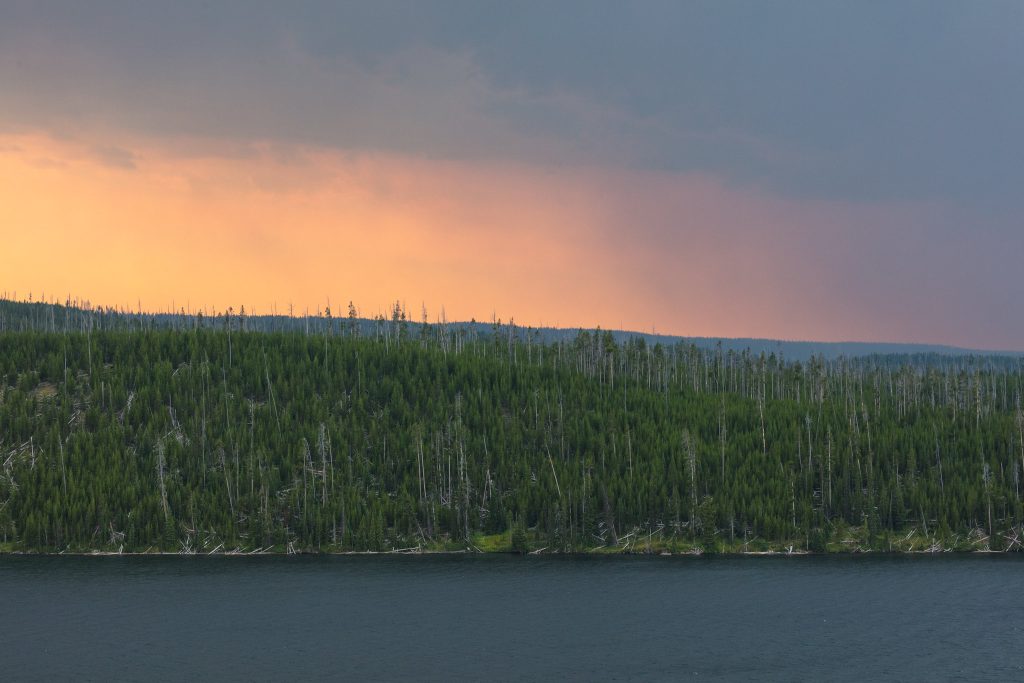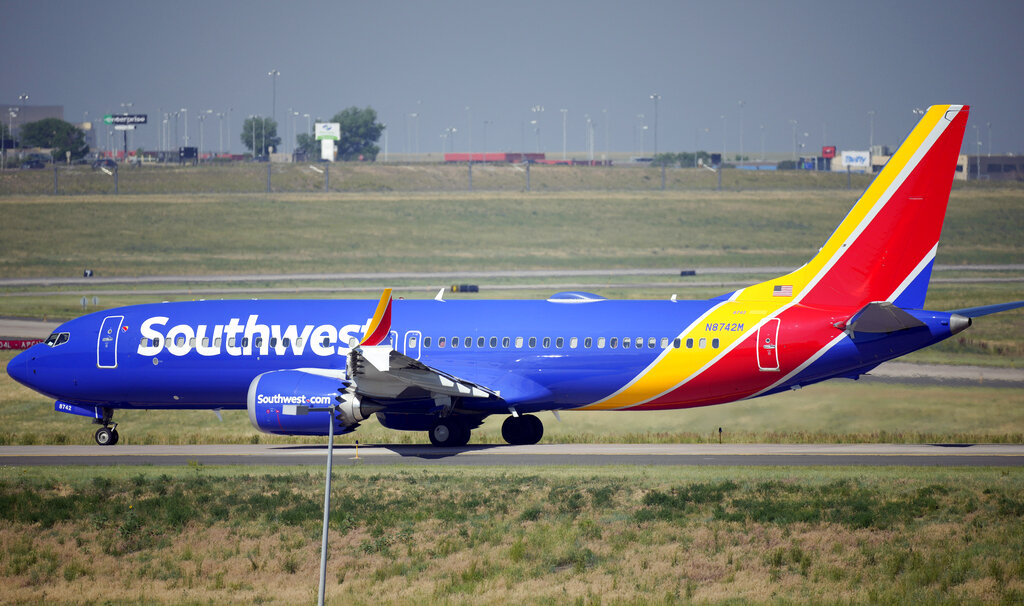Fate Of The Northwest Colorado Wolf Pack Remains A Mystery
Written by Associated Press on October 11, 2021
DENVER (AP) — On a hazy July afternoon, wolf expert Karin Vardaman returned to a spring-fed pond in Colorado’s northwestern-most corner. Enough rain had fallen to wet the ground around the watering hole. She tiptoed across the soft earth — careful not to disturb any impressions left by cattle and pronghorn antelope — until one track filled her with an almost overwhelming feeling of relief.
There, sunken into the mud near the Wyoming and Utah borders, was a broad wolf print.
“Maybe there’s one,” she said. “It gives hope.”
For nearly two years, Vardaman has visited the Moffat County rangeland every few months to track wolves for Working Circle, a nonprofit she founded to help ranchers live with the predators. The patchwork of public and private land is already a riot of animal life. Forested mountains overlook broad valleys, where elk and cattle scare badgers from their dens beneath the sagebrush.
In the winter of 2020, Colorado Parks and Wildlife announced the area also appeared to be home to the state’s first wolf pack in almost a century. The arrival marked a milestone in North American predator conservation. The pack’s rapid disappearance reveals the extent of Colorado’s challenge as it seeks to become a safe haven for the species.
Only months after its discovery, state wildlife officials learned hunters likely killed three members of the pack just across the border in Wyoming. The news came amid a rising tide of anti-wolf sentiment across the Rocky Mountain West.
In the last year, conservative states like Montana and Idaho have taken aggressive action to cut their wolf populations. Wildlife advocates anticipated the possibility, which is why many lined up behind a Colorado ballot measure to force the state to reintroduce the animals by the end of 2023. The proposition narrowly passed last November.
While Vardaman wants wolves to return to Colorado, she’s concerned the animals won’t succeed without a greater acceptance of the predators in rural communities. For years, her nonprofit has worked with ranchers in northern California and southern Oregon to protect livestock from predators. She’s now trying to adapt the model for Colorado.
“We got to be able to protect what we have before we should be bringing other critters in,” she said.
Her work has confirmed part of the task likely remains in Moffat County. A few weeks after she found the paw prints, a single wolf triggered one of Vardaman’s camera traps near the same watering hole. The device’s white flash lit the eyes of a silver wolf, possibly the lone survivor of Colorado’s first pack after an 80-year absence.
The federal government is a central character in the story of the disappearance and return of wolves to Colorado.
In the early 20th century, hunters and trappers eradicated the species from Colorado and most other parts of the lower 48 states. The U.S. Fish and Wildlife Service recorded evidence of Colorado’s last known native wolf, which the government captured and killed in Conejos County in 1945.
Fifty years later, the federal government led an effort to reintroduce the species in Yellowstone National Park and central Idaho. The packs bred and expanded across the northern Rockies over the next few decades, but the southbound journey to Colorado proved difficult.
Only a handful of lone wolves ever made it to the state, where survival was far from a guarantee. A driver killed one wolf on Interstate 70 in 2004. A hunter mistakenly killed another near Kremmling in 2015, thinking it was a coyote.
While it’s unclear exactly what happened to the Moffat County wolf pack, the first signs of trouble reached Colorado Parks and Wildlife in May 2020. As Colorado Public Radio News reported, that’s when a local resident told area wildlife manager Bill deVergie about killing two wolves just across the state border in Wyoming. The agency later learned the U.S. Fish and Wildlife Service investigated a third potential wolf killing in the same area.
Colorado wildlife officials declined to identify the hunter since the wolves were killed outside its jurisdiction. It’s also perfectly legal to hunt wolves in most of Wyoming, which has defined a “predator zone” outside the Yellowstone ecosystem where anyone can kill a wolf on sight.
The legal distinction meant the Moffat County wolf pack was never far from danger. In Colorado, anyone who kills a wolf faces a $100,000 fine and up to a year in prison. The federal Endangered Species Act also protected wolves in Colorado until earlier this year. Both protections disappeared if wolves wandered north across an invisible state line.
Throughout 2020, Colorado state biologists continued to monitor wolves in the area. Its findings are detailed in a report CPR News obtained through an open records request that shows a steady decline in wolf sightings.
In March 2020, a member of the public reported seeing seven wolves, including a video that captured five animals at a distance. By December, reports from the public and agency staff only found clear evidence confirming a single wolf.
Vardaman said she personally submitted many of the observations included in the report. As she tracked fewer and fewer wolves, she grew concerned both Colorado Parks and Wildlife and other wolf advocates had lost interest in the Moffat County pack. Rebecca Ferrell, an agency spokesperson, said state wildlife authorities are ready to enforce protections for any species classified as endangered in Colorado.
Vardaman is skeptical.
“We had a whole pack here. We only have one now. We need to do what we can to keep them safe,” she said.
Vardaman hopes speaking about the Moffat County wolf publicly will help protect it, but said it wasn’t an easy decision. One July morning, she walked from a campsite where she once heard wolf howls to a green gate dividing Colorado from Wyoming. She’s concerned a hunter could now have a reason to wait on the other side of the line with a rifle and “finish the job.”
“If someone does take matters into their own hands, I do think the public has a right to know,” she said.
Meanwhile, Colorado Parks and Wildlife has not shared any information about wolves in Moffat County in nearly a year. Ferrell, the agency spokesperson, said the reason is simple: Staff biologists have not confirmed Vardaman’s wolf sightings.
“We have not been able to independently see that animal at a staff level,” she said. “We are certainly continuing our normal efforts to verify if the animal is continuing to stay in Colorado.”
If officers do confirm a wolf, Colorado now has the sole responsibility to protect it.
On Jan. 4, the Trump administration removed federal protections for gray wolves across the country. The decision gave authority over the species to state and tribal governments, which had already occurred in Wyoming after a 2017 court decision.
After Colorado gained authority over wolves, Eric Odell, the species conservation program manager for Colorado Parks and Wildlife, said biologists attempted to attach tracking collars to any Moffat County wolves in February. He said aerial flights failed to turn up anything in the area.
“That pack has pretty much dissolved and we don’t think that they’re present anymore,” Odell said in July at a public meeting about wolves in Steamboat Springs.
Nevertheless, the state has been careful not to reveal too much about any wolves in far northwest Colorado. State wildlife officials have carefully redacted all geographical information from public documents. While CPR News has learned the details independently, it is honoring the agency’s request not to pinpoint the wolf’s location to avoid tempting anyone to harm or harass the animal — or interfere with legal hunting in an effort to protect it.
Other wolf advocates have applauded the state’s wolf protection efforts. Mike Phillips, the director of the Turner Endangered Species Fund and a science advisor for the 2020 reintroduction campaign, said Colorado has embraced its legal responsibility to guard the species.
“There’s this tendency for people to imagine gray wolves will demand something new of a state fish and game agency,” Phillips said. “In fact, they really don’t. They just demand that they continue to do their jobs well, and I have no doubt that CPW can and will do that.”
While attempts to collar a wolf in northwest Colorado failed last winter, state biologists were successful further east. In February, wildlife officials announced they had attached a tracking device to a gray wolf first observed in Jackson County.
The animal had been seen traveling with another black-furred wolf, known as F1084, which had migrated into the state from Wyoming’s Snake River Pack near Yellowstone National Park. Biologists know its origin because its long worn its own tracking collar.
Since the U.S. government started reintroducing wolves in the 1990s, collars have helped biologists study and monitor wolf movements. The decision to track the Jackson County partners quickly revealed another Colorado wolf milestone. This spring, wildlife officials said the pair had given birth to a litter of pups, marking the first clear evidence of wolf breeding in Colorado since the 1940s.
Dan Prenzlow, the director of Colorado Parks and Wildlife, said he wishes the agency also collared wolves in Moffat County but cautioned his staff simply lack the resources to track every Colorado predator.
“We’re not going to create a perception around the state where we are going to know, minute by minute, where every wolf is,” Prenzlow said.
The lack of any tracking data means the fate of the Moffat County wolf pack will likely remain a mystery. Vardaman, the wildlife advocate monitoring the remaining wolf, said it’s possible the wolf isn’t from the original group. It may have come to the state all on its own.
No matter its origin, Vardaman thinks the animal deserves more attention from the state. If wildlife officers confirm it, she thinks they should tell people it’s being monitored and protected under state law.
“I know CPW is torn in a thousand directions, but if we are going to reintroduce wolves, we need to step up our game with the packs that are already here,” Vardaman said.




